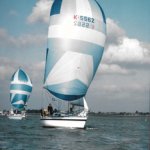
I have tried to think of a number of different titles for this piece which I hope will be of interest. I first sailed with JOG in 1978 and for nearly 15 years I was a keen participant sailing on a variety of boats. I then took a long children sabbatical before buying an elderly X95 followed by my current boat Jedi. For most of this 45 year period I have been a JOG member. While the child sabbatical left a gap in my experience the other years were very significant for JOG and for yacht racing and in many ways my story encompasses a very significant time for both.
My first JOG race was on a Nicholson 30 called “Trilogo” belonging to the Nat West Bank SC, a boat which was fast but notorious for being very wet. Over the years this was followed by a Waarship which was a Dutch designed 23 foot home built quarter tonner, this was a boat that was frequently re-built during our races. I did my first cross channel race to Le Harve on that boat, and if you think that is extreme a few years later someone took a J24 on that race, something that I suspect would not be permitted these days. Amongst the other boats on which I sailed were “Gunslinger” a Hustler 32, “Gunslinger 2” a MGRH 30 capable of amazing performance but sadly poorly built and therefore very short lived. This was followed by a Mustang 30 called “Another Dram”, an Oyster Lightwave 395 “Rapscallion”, a Yamaha 33 “Tarquah 5”, an MGRH 34 “Halcyon” and more recently my own X95 “Thistle VI” followed by my current boat “Jedi”. It used to be that there was a size limit for JOG, I cannot recall if this was an actual size limit or a Rating limit, but the typical boat was about 30 foot and a big boat was around 36 foot, over the years this was gradually relaxed.
Back in 1978 JOG was tied into the International Offshore Rule (IOR) but this was beginning to fall into disrepute as a rule that was encouraging cheque book yachting and boats that were designed to rate favourably sometimes without great regard for seaworthiness. Many say that this fall from grace was hastened by the infamous Fastnet Race of 1979, but in fact it was a few years before change arrived in the form of Channel Handicap, which has now become IRC. JOG, always keen to encourage sensible and economic development, was one of the first clubs to adopt Channel Handicap. The problems of IOR also encourage the development of One Design classes which lead to some very successful designs the best known of which are probably David Thomas’ “Impala” and “Sigma 33”, in slightly more recent years this has been followed by the success of J Boats of which my J109 is a good example, all boats well known on the JOG circuit.
Back in 1978 JOG races started from the Royal Albert Line at Southsea, at the time most RORC races started and finished off Fort Gilkicker. This meant that racing boats were often concentrated in Portsmouth Harbour, in contrast to the situation these days when Hamble and Cowes tend to be the centre of the racing fleets. In 1984 or 1895 JOG moved to the current start line off Cowes Green. The story of the move of JOG to its current line off Queens Road Cowes centres not on some important change to yachting, but was the result of the fact that Bob Lloyd (a past Captain of JOG) and Brian Goulder (the then secretary of JOG) bought flats in the house at Queen’s Road, a house which rather conveniently had a summer house and flag pole just by the road.
Back in the 70s, 80s and I suspect the 90s (this was part of my children sabbatical hence my uncertainly), JOG was very much the “Junior” club of its name. The club was run largely on the basis of volunteers helped by Brian Goulder who was secretary for many years and who was paid a nominal honorarium which makes the small amount we currently paid to our Secretariat seem generous in the extreme. This meant that the JOG program often piggy backed on the programs of other clubs. In particular the calendar included not just the St Malo race, which we still include, but also the Morgan Cup and the Deauville Race which in those days was run in turn by Royal Southern and Royal London. There was only one Solent event, the Nab Tower race, which as now was the season opener. After the change of start line to Cowes, an end of season pair of Cowes based races were added to the program, usually this included a Saturday post-race party at the Goulders’ Queens Road residence, I have memories of a couple of spectacular Sunday morning hangovers. Other regular destinations were Brighton, Fecamp, Dartmouth and Le Harve. Weymouth and Alderney were, so far as I can remember, always in the calendar. St Vaast joined the program in about 1986. St Peter Port joined the list in 1983, it was the first time that JOG accepted sponsorship, the sponsor was Schroeders Bank and again there were some big hangovers as a result. I was lucky enough to be on “Gunslinger 2” which was overall winner of the inaugural race.
As mentioned for many years Brain Goulder was secretary, he or a pressed volunteer travelled to some, but by no means all our destinations, to record the finish but it was common to have to submit self-declarations, results were often not known until Monday morning after a race. Brian managed to extract race stories from skippers when they rang in their declarations, and these were converted into lively reports which would appear in the next issue of “Yachts & Yachting”. Technology has of course changed all of that. Other changes brought in over the years are considerable. When I first raced many boats did not have VHF and the only electronic aids carried by the majority of boats were a log, a depth gauge (usually of pretty dubious accuracy) and a Radio Direction Finding (RDF) set. I for one never mastered the art of using an RDF. During the 80s the quality, performance and affordability of electronic instruments improved dramatically but there were limits on the way these could talk to each other. Next to arrive was the Decca set, the technology for this was developed during WW2 but was not freely available (or allowed for yacht racing) until after the Decca codes were cracked (I think by the Phillips Corporation). This changed the art of navigation with accuracy of about 30 metres available in large parts of Northern European Waters. Interestingly there was always a large Decca coverage hole in the middle of the Seine Bay and I recall on one occasion sailing on a boat whose owner was such a convert to Decca that he carried no navigational kit and I had to use loo paper in place of parallel rules/Breton plotter. GPS, and then chart plotters, became common during my Children sabbatical. Nowadays navigation is primarily about how to get there fastest, when I started my time as a navigator the skill was knowing where you were!
Things have changed dramatically over the last 45 years. JOG is no longer the Junior party of the Yacht racing scene; indeed we were one of the leaders coming out of COVID. In place of the paper systems of old we have a modern and highly effective race management system, which I suspect is the envy of some of our rivals. Notwithstanding this the Corinthian spirit of JOG remains very important and I for one hope that this will continue.
NOTE This article is based on a mixture of my (highly fallible) memory and many brief log book entries. I would be delighted if anyone can correct my inaccuracies or fill in the gaps.
Anthony Tahourdin
Jedi
16/10/2023

